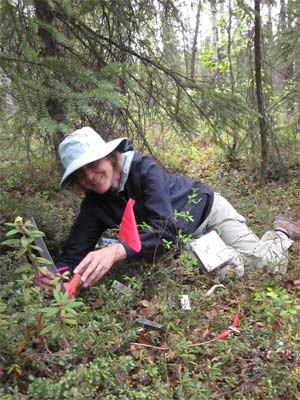
Invasive plants may threaten Alaska’s native berries
April 23, 2012
Blueberries and cranberries are a major part of Alaskan’s subsistence lifestyle, both directly, by providing berries for eating, and indirectly, by providing forage for animals that people eat. But Alaska’s native berries share similar habitats and pollinators with invasive plants such as sweet clover. “If bees and other pollinators abandon native berries for invasive plants like sweet clover, we could see a lot fewer fruits on these plants,” said Mulder, a scientist at the UAF Institute of Arctic Biology who leads a project studying whether the presence of sweet clover can alter the production of bog blueberries and mountain cranberries. Mulder hopes the public’s taste for berries will entice them into becoming volunteer citizen scientists and help her research team gather data on invasive sweet clover in Alaska and northern North America. She will be recruiting scientific helpers at the 2012 USA Science and Engineering Festival in Washington, D.C. April 27-28, 2012, as part of an “All Things Bugs” booth. To lure prospective citizen scientists to her project, Mulder plans to have a “Taste of Alaska” activity at the booth where people can compare Alaska and commercial blueberries and report which tastes sweeter or more intense, and which they like better. “You don’t need to be a professional scientist to do research,” said Mulder. “Whether you live in Alaska or the Lower 48, you can make and record observations and be a part of our research team.”
Edited by Mary Kauffman, SitNews
On the Web:
Source of News:
E-mail your news &
photos to editor@sitnews.us
|
|||
